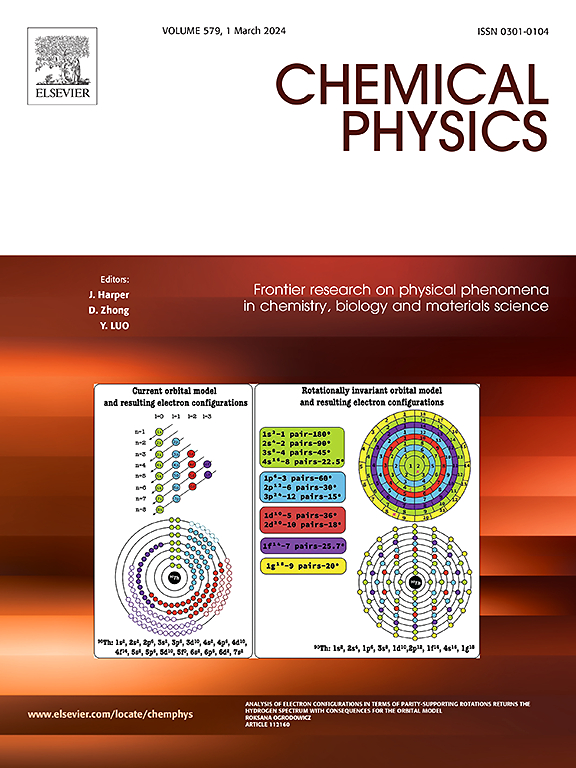硫掺杂对KTaO3钙钛矿电子结构、光学和光催化性能的影响:DFT计算
IF 2
3区 化学
Q4 CHEMISTRY, PHYSICAL
引用次数: 0
摘要
钙钛矿氧化物,如KTaO3,由于其卓越的性能,近年来吸引了大量的科学兴趣,这使它们能够用于各种领域。在我们的案例中,我们专注于光伏和光催化应用,众所周知,这些技术是基于使用具有特定间隙值的半导体,这表明间隙值是影响面板效率的重要因素。本研究的目的是通过采用不同S含量(x = 0%, 4.16%, 8.32%, 12.5%)的KTaO3-xSx掺杂工艺降低间隙值,并利用密度泛函理论(DFT)测定不同S含量的电子、光学和光催化性能。结果表明,在0% S和12.5% S的情况下,我们将带隙值从3.86 eV降低到1.24 eV,带隙从0% S的间接带隙变为4%、8%和12% S的直接带隙,并测定了与水的氧化和还原电位有关的导价带边。这些结果表明,s掺杂KTO3-xSx (x = 4.16% ~ 8.32%)是产氢的潜在候选材料。然而,在pH条件下,只有KTO3-xSx化合物(x = 0%和4.16%)可以利用太阳辐射光催化水制氢。本文章由计算机程序翻译,如有差异,请以英文原文为准。
Effect of sulfur doping on the electronic structures, optical and photocatalytic properties of KTaO3 perovskites: DFT calculations
Perovskite oxides such as KTaO3 have attracted a great deal of scientific interest in recent years thanks to their remarkable properties, which enable them to be used in a variety of fields. In our case, we've focused on photovoltaic and photocatalytic applications, and it's well-known that these techniques are based on the use of semiconductors with a specific gap value, which indicates that the gap value is an important element that influences the efficiency of panels. The objective of this study is to decrease the gap value by applying the KTaO3-xSx doping process with different percentages of S (x = 0 %, 4.16 %, 8.32 %, and 12.5 %) to determine the electronic, optical, and photocatalytic properties of the different percentages of S using density functional theory (DFT). As a result, we reduced the gap value from 3.86 eV to 1.24 eV corresponding to 0 % S and 12.5 % S respectively, and the bandgap changed from an indirect bandgap equivalent to 0 % S to a direct bandgap for 4 %, 8 % and 12 % S.
Conduction and valence band edges were also determined in relation to the oxidation and reduction potentials of water. These results indicate that S-doped KTO3-xSx (x = 4.16 % to 8.32 %) are potential candidates for hydrogen production. However, under pH conditions, only KTO3-xSx compounds (x = 0 % and 4.16 %) can be used for hydrogen production by photocatalysis of water using solar radiation.
求助全文
通过发布文献求助,成功后即可免费获取论文全文。
去求助
来源期刊

Chemical Physics
化学-物理:原子、分子和化学物理
CiteScore
4.60
自引率
4.30%
发文量
278
审稿时长
39 days
期刊介绍:
Chemical Physics publishes experimental and theoretical papers on all aspects of chemical physics. In this journal, experiments are related to theory, and in turn theoretical papers are related to present or future experiments. Subjects covered include: spectroscopy and molecular structure, interacting systems, relaxation phenomena, biological systems, materials, fundamental problems in molecular reactivity, molecular quantum theory and statistical mechanics. Computational chemistry studies of routine character are not appropriate for this journal.
 求助内容:
求助内容: 应助结果提醒方式:
应助结果提醒方式:


